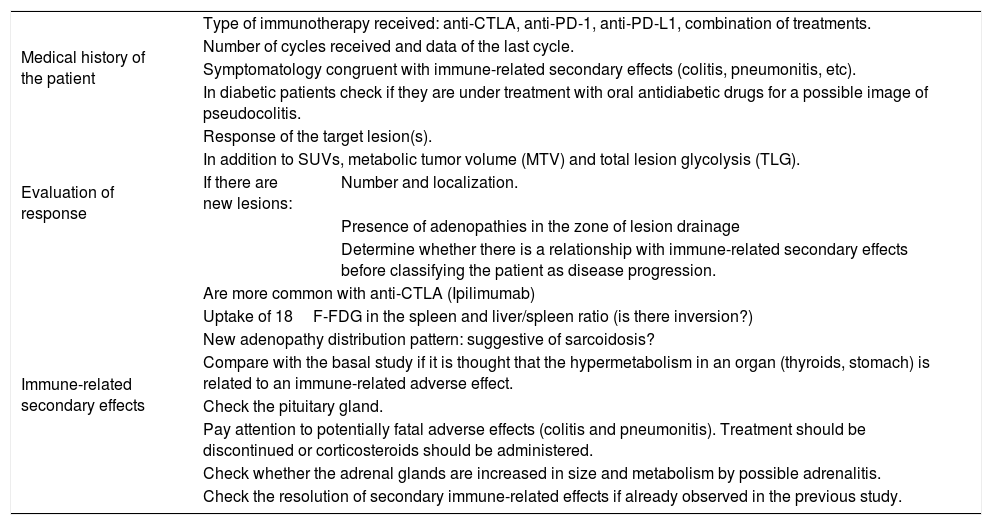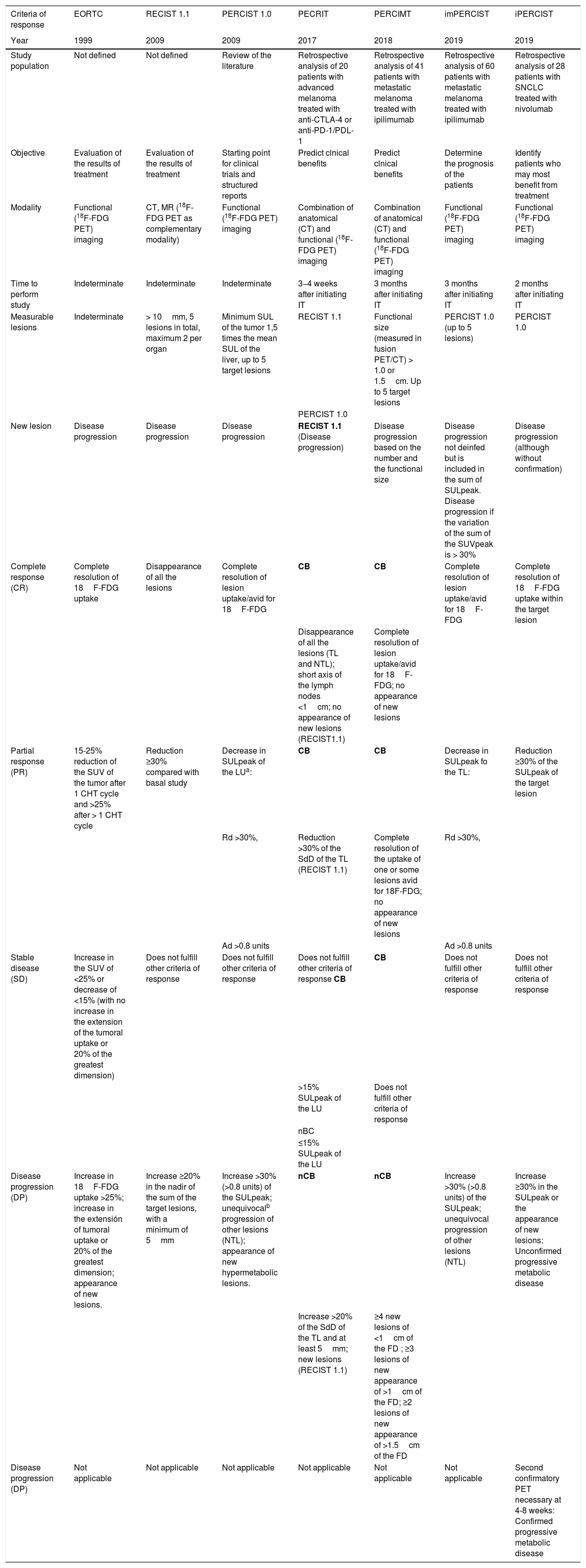The treatment of cancer by immunotherapy has been a revolution, as it is the first strategy that manages to control the disease for prolonged periods of time. Its efficacy is associated with different imaging response patterns and the appearance of new toxicities. We would highlight two patterns of tumour response: pseudoprogression, or growth of tumour lesions after the start of immunotherapy treatment, followed by a significant reduction in lesions, and hyperprogression, acceleration of tumour progression and metastasis early after the start of treatment. The emergence of such patterns has generated new metabolic response criteria, such as PECRIT, PERCIMT, imPERCIST and IPERCIST. Of particular interest are the new immunoPET-specific biomarkers, as they allow the identification of patients presenting the tumour target and are useful for predicting response to immunotherapy.
El tratamiento del cáncer mediante inmunoterapia ha supuesto una revolución, ya que es la primera estrategia que consigue controlar la enfermedad por periodos prolongados de tiempo. Su eficacia va asociada a diferentes patrones de respuesta por imagen y a la aparición de toxicidades nuevas. Destacaríamos dos patrones de respuesta tumoral: La pseudoprogresión, o crecimiento de las lesiones tumorales tras el inicio del tratamiento de inmunoterapia, seguido de una reducción significativa de las mismas y la hiperprogresión, aceleración en la progresión del tumor y de las metástasis de forma precoz tras el inicio del tratamiento. La aparición de dichos patrones ha generado nuevos criterios de respuesta metabólicos, tales como el PECRIT, PERCIMT, imPERCIST e IPERCIST. De especial interés, son los nuevos biomarcadores específicos del inmunoPET, ya que permiten identificar los pacientes que presentan la diana tumoral y son útiles para predecir la respuesta a la inmunoterapia.
Artículo

Revista Española de Medicina Nuclear e Imagen Molecular (English Edition)
Comprando el artículo el PDF del mismo podrá ser descargado
Precio 19,34 €
Comprar ahora











